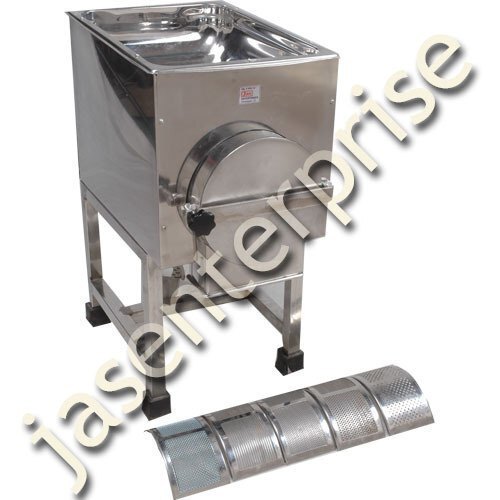Industrial Automatic Snack Frying Machine
Price 1750000 INR/ Unit
Industrial Automatic Snack Frying Machine Specification
- Capacity
- 500 Kg/hr
- Automatic
- Yes
- Voltage
- 230/440 Volt (v)
- Feature
- ECO Friendly, Low Noice, Lower Energy Consumption, Compact Structure, High Efficiency
Industrial Automatic Snack Frying Machine Trade Information
- Minimum Order Quantity
- 1 Unit
- Payment Terms
- Cash Against Delivery (CAD), Cash Advance (CA), Cash in Advance (CID), Cheque, Western Union
- Main Domestic Market
- All India, South India, Central India, West India, North India, East India, Gujarat, Karnataka, Kerala, Lakshadweep, Mizoram, Meghalaya, Manipur, Andhra Pradesh, Bihar, Chandigarh, Daman and Diu, Goa, Jharkhand, Odisha, Punjab, Assam, Delhi, Dadra and Nagar Haveli, Andaman and Nicobar Islands, Arunachal Pradesh, Chhattisgarh, Haryana, Himachal Pradesh, Jammu and Kashmir, Madhya Pradesh, Maharashtra, Nagaland, Rajasthan, Sikkim, Tamil Nadu, Telangana, Tripura, Pondicherry, Uttar Pradesh, Uttarakhand, West Bengal
- Certifications
- ISO
About Industrial Automatic Snack Frying Machine
-
Frying Chamber: This is where the snacks are fried. It typically includes a heating element or fryer that can be heated to precise temperatures. The chamber is often equipped with a conveyor belt or basket system to move snacks through the oil.
-
Oil Filtration System: To maintain oil quality and reduce the frequency of oil changes, these machines often include an oil filtration system. This system helps remove impurities and food particles from the oil.
-
Temperature Control: Precise temperature control is essential for consistent frying results. Many machines come with digital temperature controls and sensors to monitor and adjust the frying temperature automatically.
-
Conveyor System: An automatic conveyor system moves the snacks through the fryer. The speed of the conveyor can usually be adjusted to control frying time and ensure even cooking.
-
Oil Reservoir: The reservoir holds the frying oil. Some machines have a separate heating unit to keep the oil at the desired temperature.
-
Cooling System: After frying, snacks often need to be cooled before packaging. Some machines include a cooling conveyor or air blower to help with this process.
-
Control Panel: The control panel allows operators to set frying times, temperatures, and other parameters. It may also include diagnostics and maintenance alerts.
-
Cleaning Mechanism: Given the nature of frying, regular cleaning is necessary. Many machines are designed with removable parts and cleaning cycles to simplify maintenance.
-
Safety Features: Safety is critical in industrial machines. Features may include automatic shut-off systems, overheat protection, and emergency stop buttons.
-
Energy Efficiency: Modern machines are often designed to be energy-efficient to reduce operational costs and environmental impact.


Price:
- 50
- 100
- 200
- 250
- 500
- 1000+
More Products in Food Processing Machinery Category
Industrial Gas Oven
Price 10000 INR / Unit
Minimum Order Quantity : 1 Unit
Automatic : Yes
Material : Stainless Steel
Warranty : 1 Year
Computerized : No
Table Top Grill
Price 6500 INR / Unit
Minimum Order Quantity : 1 Unit
Automatic : Yes
Material : Stainless Steel
Warranty : 1 Year
Computerized : No
Dry And Wet Mill
Price 22000 INR / Unit
Minimum Order Quantity : 1 Unit
Automatic : Yes
Material : Stainless Steel
Warranty : One year against manufacturing defects at our site
Computerized : No
Gravy Maker
Price 8900 INR / Unit
Minimum Order Quantity : 1 Unit
Automatic : Yes
Material : Stainless Steel
Warranty : One year against manufacturing defects at our site
Computerized : No

 Send Inquiry
Send Inquiry






 Send Inquiry
Send Inquiry Send SMS
Send SMS Call Me Free
Call Me Free